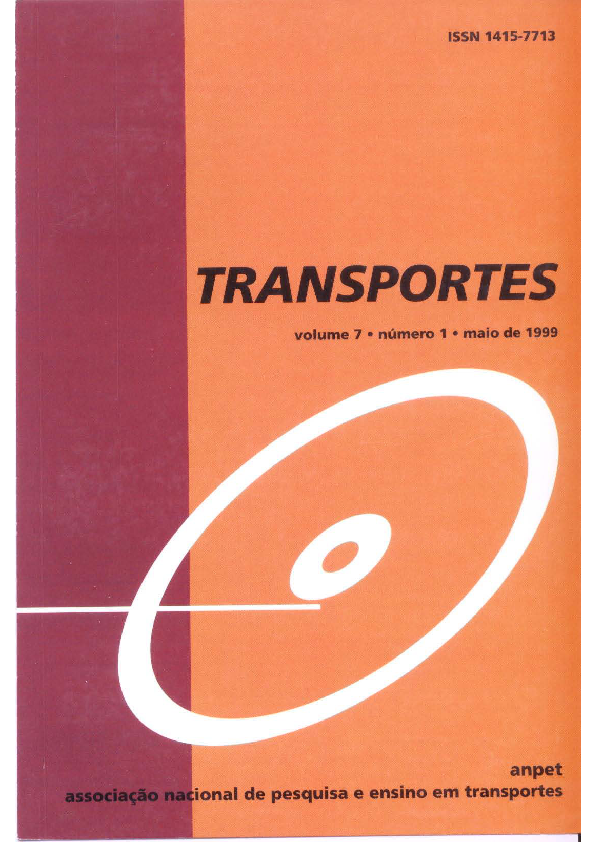Modelo para formação de composições ferroviárias
DOI:
https://doi.org/10.14295/transportes.v7i1.219Abstract
Este trabalho apresenta um modelo analítico para resolver o problema da formação de trens, o qual consiste na definição de seus itinerários, freqüências, tamanhos e perfis de carregamentos e tração, a fim de atender à demanda no período estipulado e sujeito às restrições físicas e operacionais da empresa ferroviária. A heurística desenvolvida leva em conta aspectos fundamentais, como frota heterogênea e limitada de locomotivas e vagões, variação de bitola na malha e cargas com diferentes prioridades. Inicialmente é obtida uma solução de trens diretos, a qual é em seguida objeto de refinamento, para combinar trens e minimizar a movimentação de vagões vazios. A heurística incorpora um algoritmo de caminho mínimo e uma estratégia baseada no problema da mochila binário (knapsack Problem). O modelo foi aplicado com sucesso para um caso real de formação de trens da FEPASA.
ABSTRACT
This work presents an analytical model to solve the train formation problem, which consists of the definition of itineraries, frequencies, sizes, and profiles of shipments and traction of the trains, in order to meet the demand in the specified period, subject to the physical and operational constraints of the rail company. The heuristic presented takes into account fundamental aspects such as heterogeneous and limited fleets of locomotives and wagons, gauge variation in the rail network, and cargoes with different priorities. A solution related to direct trains formation is obtained at first, which is then submitted to a refinement procedure, to combine trains and minimize the movement of empty wagons. The heuristic incorporates a shortest path algorithm and a strategy based on the Knapsack Problem. The model was successfully applied to a real case with data from FEPASA.
Downloads
Downloads
Published
How to Cite
Issue
Section
License
Authors who submit papers for publication by TRANSPORTES agree to the following terms:
- The authors retain the copyright and grant Transportes the right of first publication of the manuscript, without any financial charge, and waive any other remuneration for its publication by ANPET.
- Upon publication by Transportes, the manuscript is automatically licensed under the Creative Commons License CC BY 4.0 license. This license permits the work to be shared with proper attribution to the authors and its original publication in this journal, and to be adapted for non-commercial purposes, provided appropriate credit is given and any derivative works are distributed under the same terms.
- Authors are authorized to enter into additional separate contracts for the non-exclusive distribution of the version of the manuscript published in this journal (e.g., publishing in an institutional repository or as a book chapter), with recognition of the initial publication in this journal, provided that such a contract does not imply an endorsement of the content of the manuscript or the new medium by ANPET.
- Authors are permitted and encouraged to publish and distribute their work online (e.g., in institutional repositories or on their personal websites) after the editorial process is complete. As Transportes provides open access to all published issues, authors are encouraged to use links to the DOI of their article in these cases.
- Authors guarantee that they have obtained the necessary authorization from their employers for the transfer of rights under this agreement, if these employers hold any copyright over the manuscript. Additionally, authors assume all responsibility for any copyright infringements by these employers, releasing ANPET and Transportes from any responsibility in this regard.
- Authors assume full responsibility for the content of the manuscript, including the necessary and appropriate authorizations for the disclosure of collected data and obtained results, releasing ANPET and Transportes from any responsibility in this regard.









